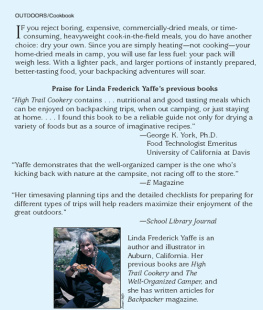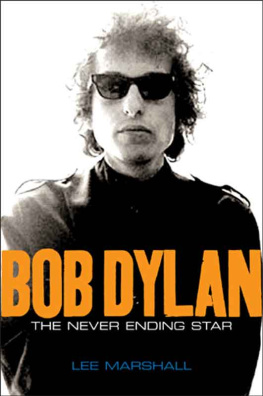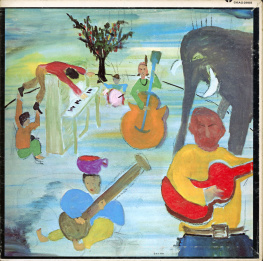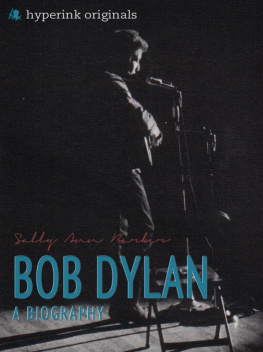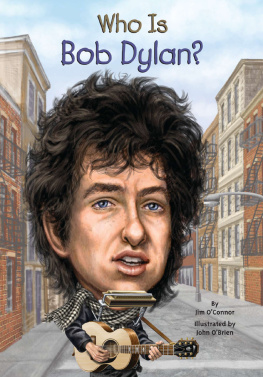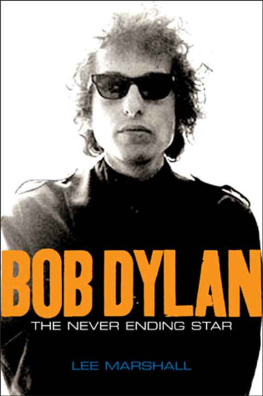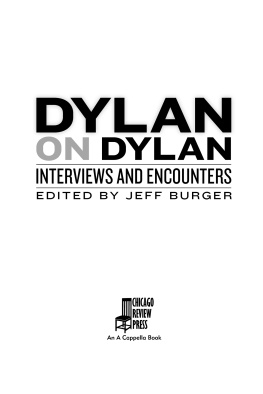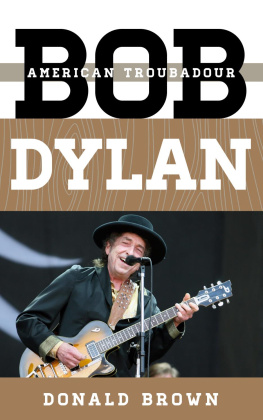Bob Dylan

Bob Dylan
Like a Complete Unknown
David Yaffe

The author acknowledges The College of Arts and Sciences at Syracuse University for its generous support of his research and the production of this book.
Copyright 2011 by David Yaffe.
All rights reserved.
This book may not be reproduced, in whole or in part, including illustrations, in any form (beyond that copying permitted by Sections 107 and 108 of the U.S. Copyright Law and except by reviewers for the public press), without written permission from the publishers.
Frontispiece: Andy Warhol, Screen Test: Bob Dylan (1966). 16mm film, black & white, silent, 4 minutes at 16 frames per second. Copyright 2010 The Andy Warhol Museum, Pittsburgh, PA, a museum of the Carnegie Institute. All rights reserved.
Yale University Press books may be purchased in quantity for educational, business, or promotional use. For information, please e-mail sales.press@yale.edu (U.S. office) or sales@yaleup.co.uk (U.K. office).
Set in Janson type by Integrated Publishing Solutions,
Grand Rapids, Michigan.
Printed in the United States of America by Thomson-Shore,
Dexter, Michigan.
Library of Congress Control Number: 2011920627
ISBN 978-0-300-12457-6 (hardcover : alk. paper)
A catalogue record for this book is available from the British Library.
This paper meets the requirements of ANSI/NISO Z39.48-1992
(Permanence of Paper).
10 9 8 7 6 5 4 3 2 1
ICONS OF AMERICA
Mark Crispin Miller, Series Editor
Icons of America is a series of short works written by leading scholars, critics, and writers, each of whom tells a new and innovative story about American history and culture through the lens of a single iconic individual, event, object, or cultural phenomenon.
The Hollywood Sign: Fantasy and Reality of an American Icon, by Leo Braudy
Joe DiMaggio: The Long Vigil, by Jerome Charyn
The Big House: Image and Reality of the American Prison, by Stephen Cox
Andy Warhol, by Arthur C. Danto
Our Hero: Superman on Earth, by Tom De Haven
Fred Astaire, by Joseph Epstein
Wall Street: Americas Dream Palace, by Steve Fraser
No Such Thing as Silence: John Cages 4 33 , by Kyle Gann
Frankly, My Dear: Gone with the Wind Revisited, by Molly Haskell
Alger Hiss and the Battle for History, by Susan Jacoby
Nearest Thing to Heaven: The Empire State Building and American Dreams, by Mark Kingwell
Unwarranted Influence: Dwight D. Eisenhower and the Military-Industrial Complex, by James Ledbetter
The Liberty Bell, by Gary Nash
The Hamburger: A History, by Josh Ozersky
Gypsy: The Art of the Tease, by Rachel Shteir
Kings Dream, by Eric J. Sundquist
Inventing a Nation: Washington, Adams, Jefferson, by Gore Vidal
Bob Dylan: Like a Complete Unknown, by David Yaffe
Small Wonder: The Little Red Schoolhouse in History and Memory, by Jonathan Zimmerman
For Amy, and for Julian
And every one of them words rang true
And glowed like burnin coal
Pourin off of every page
Like it was written in my soul from me to you
Contents
ONE
The Cawing, Derisive Voice
TWO
Screen Test:
The Many Dylans of the New Millennium
THREE
Not Dark Yet:
How Bob Dylan Got His Groove Back
FOUR
Dont Steal, Dont Lift:
Appropriation, Artifice, Originality
Afterword:
Now You Can Seal Up the Book and
Not Write Anymore
Acknowledgments
The journey of writing, not writing, and writing this book again has taken me to some unexpected places, an astonishing range of the joys and sorrows life can bring. Fortunately, the joys have prevailed, and I thank every person and every institution that helped me arrive where I am now. Thinking about Bob Dylan began to seem necessary when I was fifteen. Making sense of my ideas, and trudging beyond a crowded field of exegetes, really took being twice that age, toward the end of a first book and realizing I had been sitting on the next one for years. I knew I was in for a terminal case when I was no longer obsessing over just Blonde on Blonde or Blood on the Tracks but also Infidels or Oh Mercy. Listing everyone who ever contributed to my thinking on Dylan would require some sort of repressed memory therapy.
There are certain individuals that stand out, though. Elon Green provided counsel on the playlist; Steve Elworth, Jim Hoberman, Jonathan Rosenbaum, and Jim Morrison (not that one, the other one) gave wise advice on the film chapter; Morris Dickstein paved the way for thinking of Dylan in a broad cultural context; and David Hajdu set high standards for music and culture writing and has been a cherished and supportive friend. Dan Torday continues to be a wonderfully supportive friend as well as an excellent guitar player, singer, and literary interlocutor. The University of Minnesota, Twin Cities; the CUNY Graduate Center; The New School; and Columbia University invited me for lectures that bore fruit in these pages. At Minnesota, I met Kevin Dettmar, who had already commissioned my essay for the Cambridge Companion to Bob Dylan, and who became a wonderful colleague and confidant. I also profited from conversations with John Barner, who, with Thom Swiss, commissioned another Dylan essay for the University of Minnesota Press. I am grateful for the permission to reprint passages in altered form. I also thank Alex Kafka at the Chronicle of Higher Education, Adam Shatz, formerly at The Nation, and Michael Agger at Slate, who each edited my pieces on Dylan (for Michael, there were three!) and who gave me space to set my sails. I am also grateful to John Palettella, my astute and generous editor at The Nation, for giving me a free hand, granting me time off from my music critic duties to complete these pages, and welcoming me back when I was ready.
I have had the good fortune to be gainfully employed at Syracuse University, where I have taught Dylan, and where I have made some lasting friendships and enjoyed writerly camaraderie among colleagues. Harvey Teres has been a brother to me in many ways (he will know what this means) and was among the first people here to make me feel at home. I am also grateful to many other colleagues, past and present, including Johanna Keller, Chris Kennedy, George Saunders, Brooks Haxton, Bruce Smith, Dana Spiotta, Silvio Torres-Saillant, Peter Mortenson, Dympna Callaghan, Arthur Flowers, Michael Burkard, Mary Karr, Sandy Sternlicht, Kevin Morrison, Ken Frieden, Scott Lyons, Stephanie Shirilan, and Mary Gaitskill. Gregg Lambert and Erin Mackie both supported me in their capacities as English department chairs, and I thank the university for a paid semesters sabbatical. I am also grateful to anyone else who gave me kindness and splashes of jocularity or showed an interest in my work. I am grateful to Gerry Greenberg, Senior Associate Dean for Humanities (among many other duties), who graciously and assiduously helped with accessing the universitys subvention fund for production costs. I also spent the 200809 school year as the Gould Faculty Fellow at Claremont McKenna College, where I was brought out by the formidable Bob Faggen, and where I got to enjoy stimulating intellectual relationships with a West Coast posse that included Bob, Adam Bradley, and Keri Walsh. Kevin Dettmar was steps away at Pomona, also a boon.
Next page

